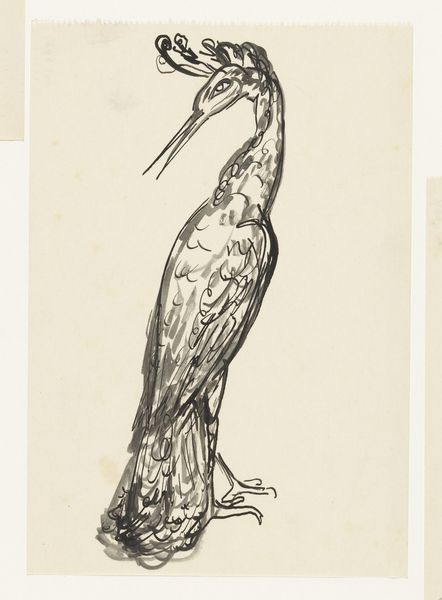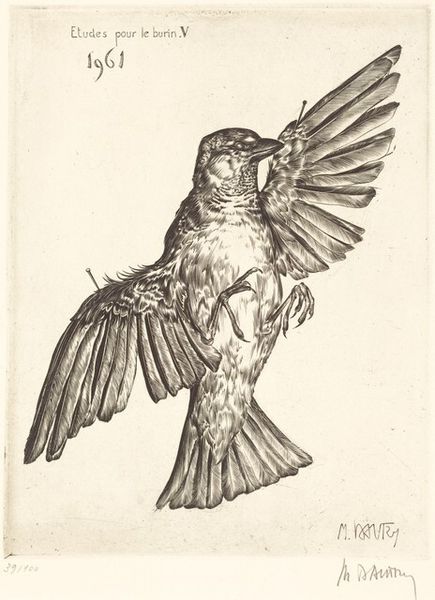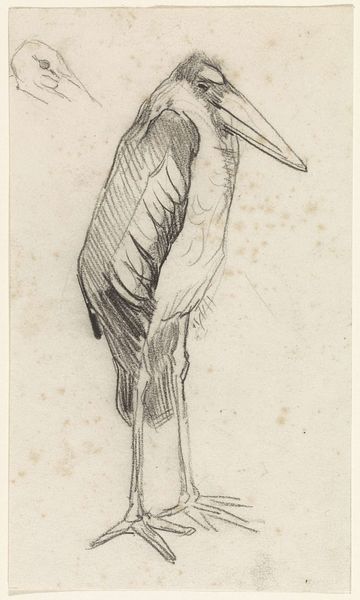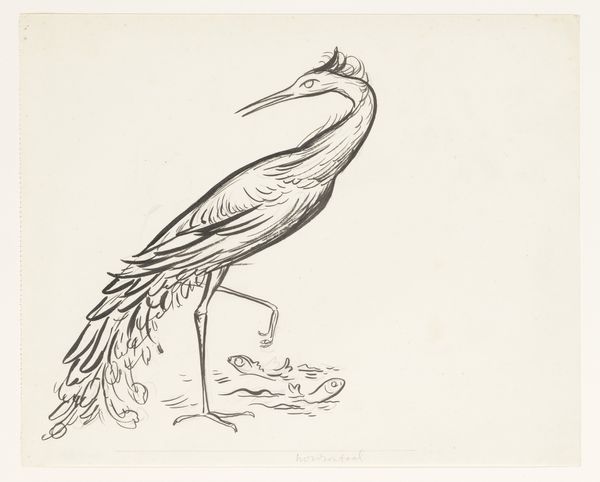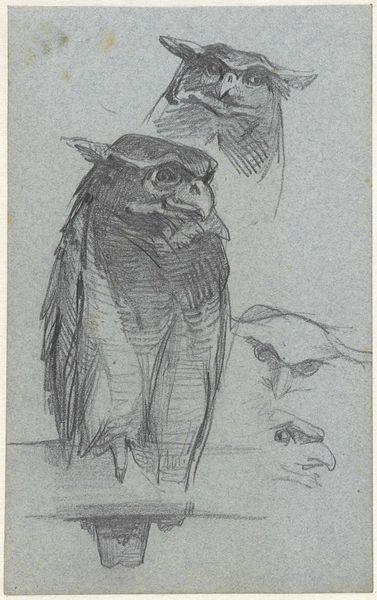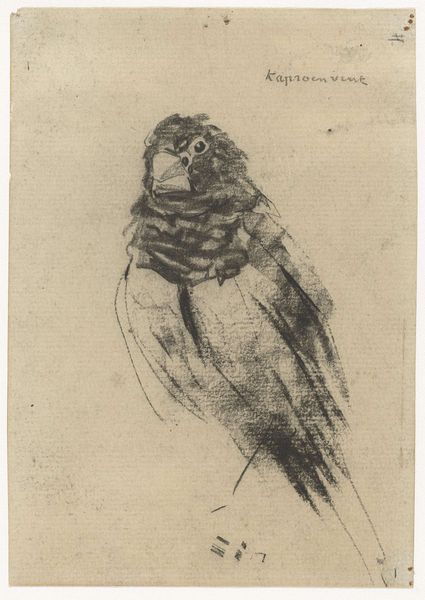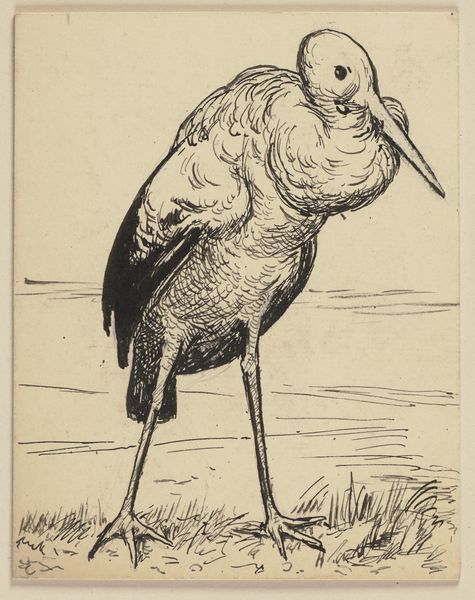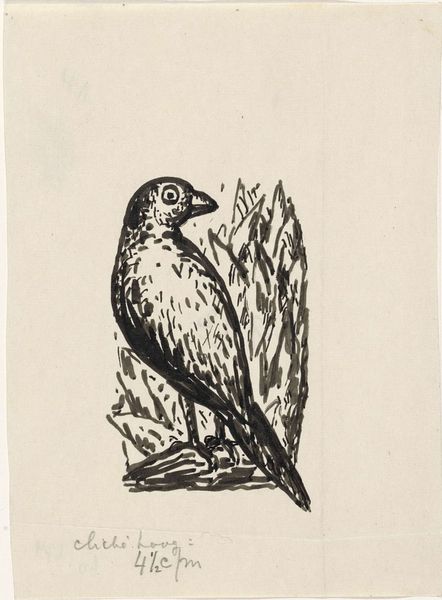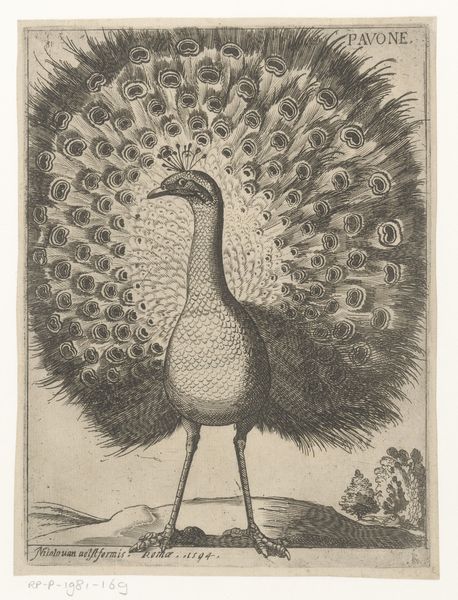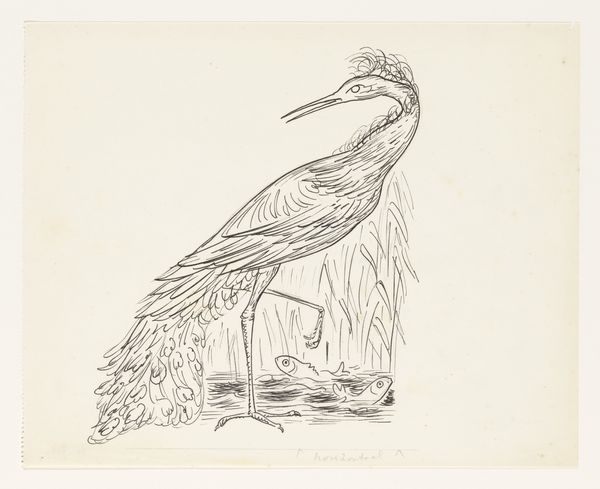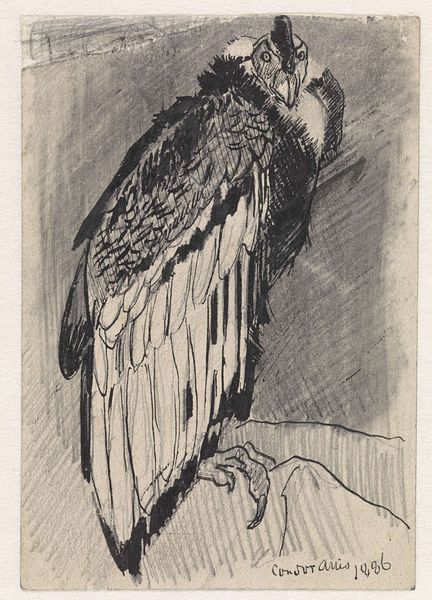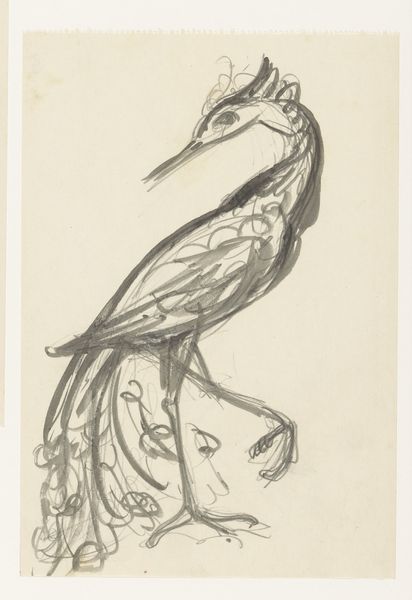
Dimensions: height 315 mm, width 243 mm
Copyright: Rijks Museum: Open Domain
Curator: "Maraboe in de regen," created around 1905 by Theo van Hoytema. It resides here at the Rijksmuseum, a beautiful study in pencil and ink. Editor: The overall tone immediately strikes me as melancholic; the downcast marabou looks almost defeated by the weather. There’s something universally relatable about it. Curator: It's fascinating to see Hoytema, primarily known for his decorative lithographs, exploring such raw emotion with simple pencil strokes. It encourages us to examine how artistic reputations box people into expectations based on historical bias. Editor: I find myself dwelling on the rain itself. In many cultures, rain is associated with cleansing and renewal. Is the marabou merely enduring a storm, or is there a deeper symbolic layering to its posture? What meaning does the artist assign it? Curator: I agree. Consider the socio-political context in early 20th century Netherlands—a period grappling with industrialization and its impact on nature. This solitary marabou, vulnerable against the downpour, could be read as a subtle critique of human encroachment. Editor: Absolutely, and even beyond that, marabous often symbolize patience, adaptability, and survival in challenging environments. Seeing it rendered in such delicate lines lends it a kind of fragility; a poignant counterpoint to the bird's otherwise resilient nature. It touches on core aspects of human existence and collective memory. Curator: That really expands how we interpret the visual imagery. Hoytema challenges us to rethink stereotypical power dynamics by portraying this normally resilient figure in a vulnerable light. This piece transcends merely depicting an animal. It provokes dialogues on societal inequalities and hidden anxieties. Editor: Reflecting on "Maraboe in de regen," the image is much more than it seems on the surface. Curator: Agreed, a deceptively simple image that sparks discussions on both personal vulnerability and collective struggles within a broader social and historical tapestry.
Comments
No comments
Be the first to comment and join the conversation on the ultimate creative platform.
